Presented by

It’s hard to believe, but it was once difficult to find an authentic Japanese meal in Bangkok. Today, it has become difficult to avoid Japanese restaurants, which easily number into the thousands in the Thai capital alone — fitting for a city that hosts the fourth-largest Japanese expat population in the world after Los Angeles, New York and Shanghai.
All that choice poses its own set of problems: how to sift through the bounty of eateries offering their own takes on the cuisine from the Land of the Rising Sun? Here, we humbly offer up our own suggestions for your next big matsuri (holiday or festival in). Itadakimasu!
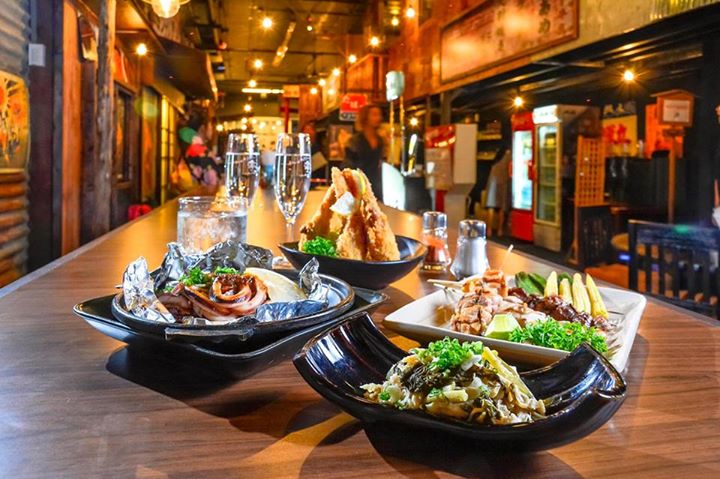
Thonglor Yokocho
Diners jonesing for an authentic Japanese dining experience need look no further than Thonglor Yokocho (Thonglor Soi 18, 02-714-7918, open 17-24 daily). Named after the Japanese term for “alleyway”, Yokocho is styled after a bona fide side-street in Tokyo, replete with its own sakura (cherry blossom) tree and mini-games arcade. Japan’s yokochos are typically lined with all types of easy-going Japanese-style “street food” eating spots, and many of those foods are featured here.
Taking center stage on this izakaya-style menu is yakitori, a succession of grilled chicken bits and vegetables on the skewer, served either with sweet soy sauce or sprinkled liberally with salt. There is also cold weather fare such as a pork bone broth-based soup, simmered for more than 15 hours and thick with pork innards and vegetables. Of course, don’t forget the extensive selection of sakes, and shochus with which to wash that all down.
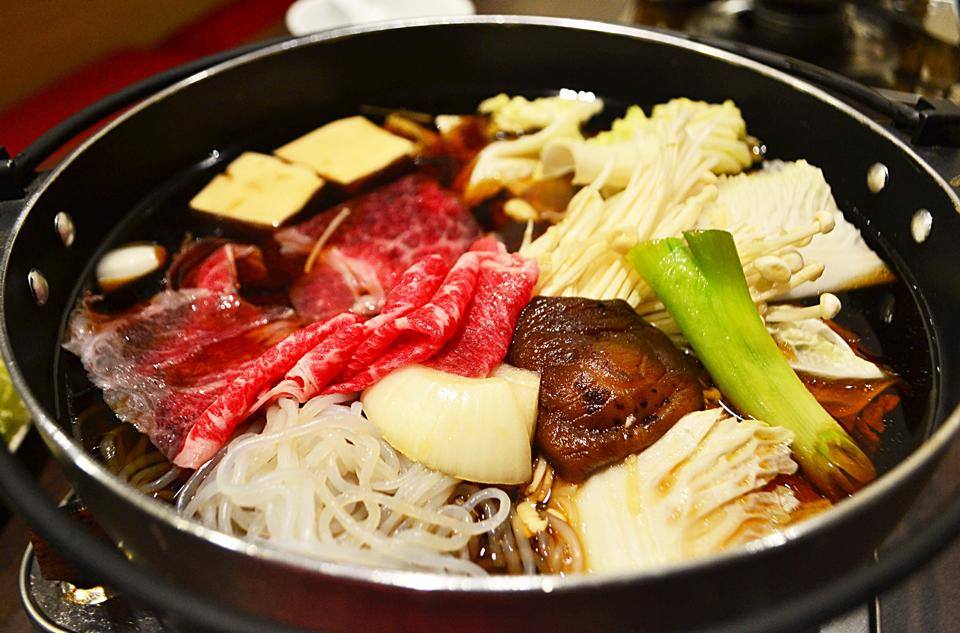
Sukiyaki, Akiyoshi Japanese Restaurant
Or red meat may be more up your alley. If that is the case, Akiyoshi Japanese Restaurant (Siam Square 1, 02-115-1492, open 11-22 daily) has those needs covered. Counting itself as among the first restaurants in Thailand to offer buffet-style shabu shabu and sukiyaki, Akiyoshi offers up a menu crafted by former Iron Chef winner Chef Masato with a la carte selections that include sushi and sashimi for those less carnivorously inclined. But the main event is clearly meant to be the shabu shabu — a “hotpot” typically of pork or beef with vegetables and noodles and dipping sauces of sesame and ponzu — and the sukiyaki, which features a communal frying pan in which meat, noodles and vegetables are doused in a sweet broth while cooking and cooled in raw egg before eating.
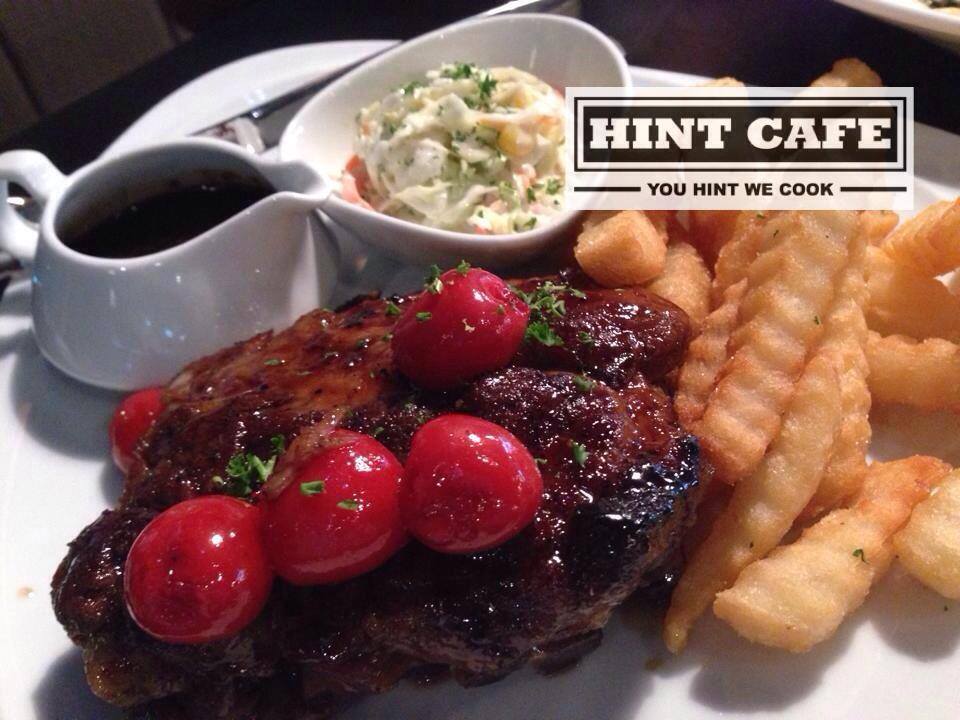
Pork Spareribs with a Cherry-Coke glaze, Hint Cafe
Bangkok also has its share of restaurants that dabble on both sides of the East-West divide. Take Hint Cafe (308 Soi Thonglor 10, 02-170-7221-2, open 10.30-24 daily), which boasts a modern fusion menu studded with new twists on old favorites like the cold soba salad with seared prawns and ebiko, or the pork spareribs with a cherry-Coke glaze.
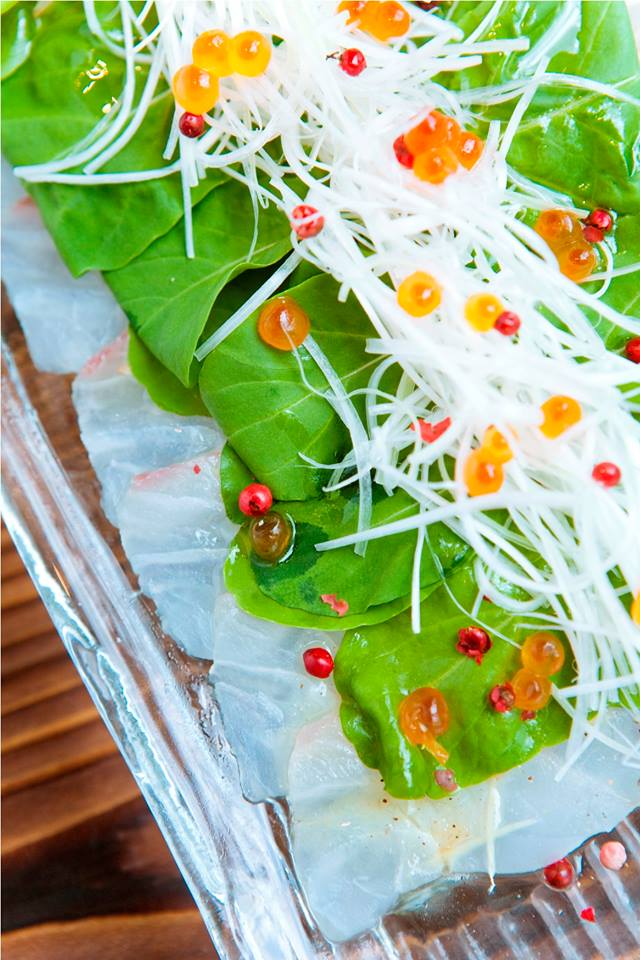
Sashimi with Rocket salad, Ogu Ogu
Ogu Ogu (Ground fl., Park Venture Ecoplex, 02-108-2255, open 11.30-14 and 17-22 daily), for its part, models itself after a downtown Tokyo sake bar, but betrays some European touches through dishes like the lotus chips with rosemary salt and sashimi salad. And if you have humbler tastes (or find yourself in need of a late-night pick-me-up),

Big Curry Challenger, Gold Curry
Gold Curry (20/3 Sukhumvit 39, 02-662-5003, open 11-2 daily) will easily fit the bill, with its mammoth portions of Kanazawa-style curry — up to 2 kg’s worth! — accompanied by a mountain of Japanese rice and shredded cabbage.
What do all these great Japanese eateries have in common, you ask? They all serve Asahi Super Dry, the perfect beer to wash down these toothsome dishes. Created in 1987, Asahi Super Dry was the first beer of its kind in Japan, where only heavy, bitter beers predominated up to the mid-1980s.
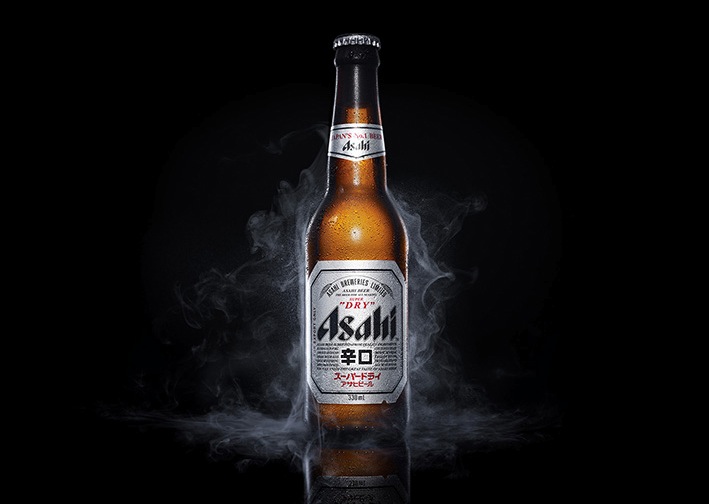
In search of a beer that could be dry like wine or sake and go well with all kinds of food, Asahi’s creators tested millions of combinations of the yeast, hops and barley used to make beer and came up with something light, versatile and refreshing enough to accompany everything from sushi to pizza. Today, that beer — dubbed “Karakuchi”, meaning “dry” — is Japan’s number one beer, and consumed in more than 40 countries throughout the globe.
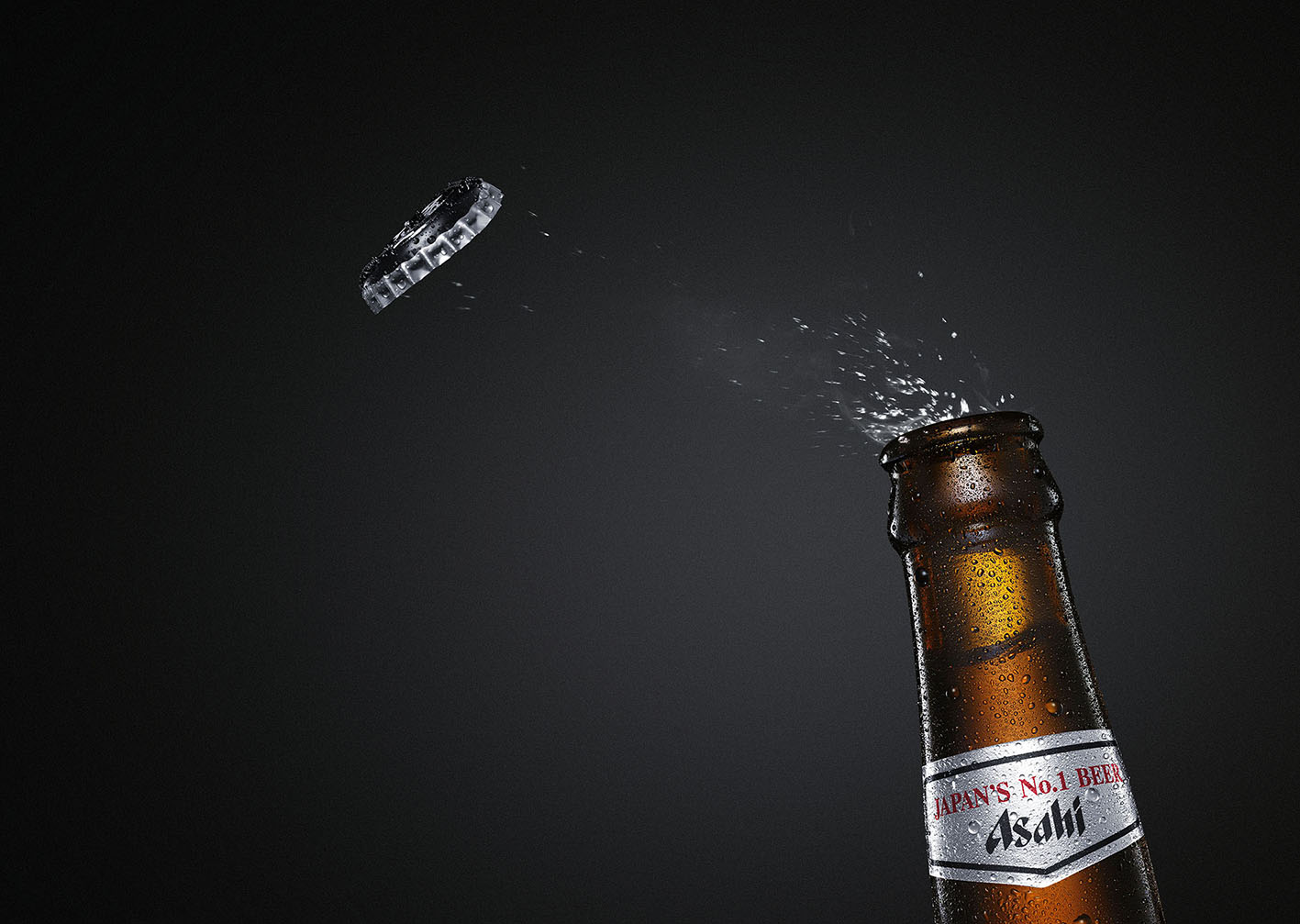
The search for the perfect water, hops and yeast took years, but the brewing process itself is relatively straightforward. The best-quality dried, sprouted barley is used to make malt, which is then cracked and mashed with hot spring water until the starch in the malt is formed into sugar. The ensuing liquid, called wort, is then separated from the mash and boiled before hops are added to “season” the liquid.
This mix is then strained again and cooled so that the yeast — in this case Asahi Yeast Strain 318 — can be introduced to form the taste that has made Asahi Super Dry so popular to beer lovers worldwide. Left for over a week so that the yeast can interact with the sugar in the mix, the liquid is then strained again before it is tested, packaged and sent to shops, kept carefully at a temperature no higher than 20 degrees Celsius throughout its journey.
A lot of work? Maybe. Luckily, the most work you will have to do is to lift your arm and swallow.
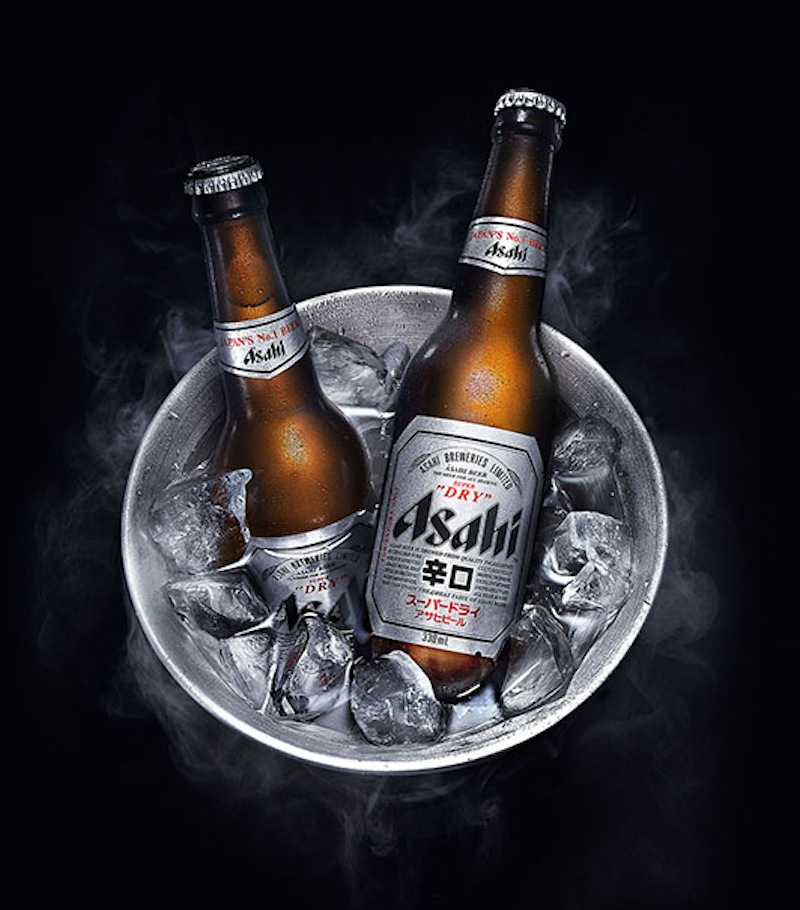
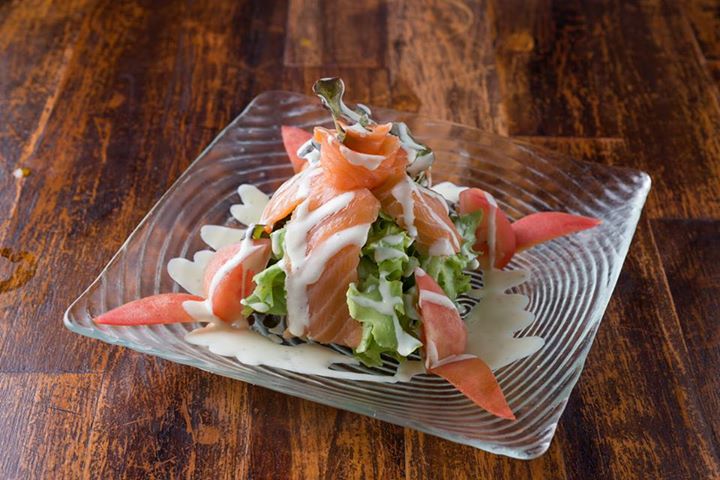




Reader Interactions